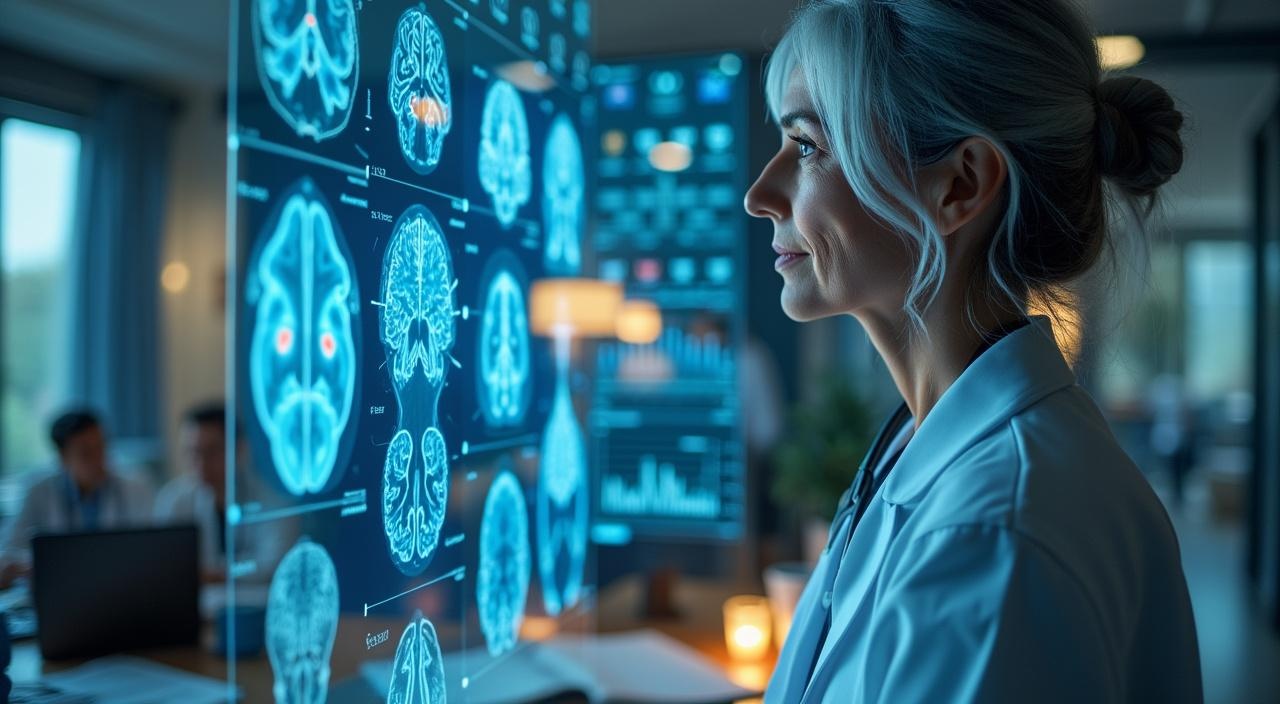AI is revolutionizing women’s healthcare, creating a powerful fusion of technology and healing that addresses longstanding gaps in medical understanding. Through machine learning and predictive analytics, women now have access to personalized health monitoring that offers both accuracy and compassionate care where traditional medicine has fallen short.
Key Takeaways:
- AI-powered technologies are dramatically improving diagnostic accuracy for women’s unique physiological responses
- Advanced wearable devices now track intricate health markers like hormonal fluctuations and stress patterns with medical-grade precision
- Machine learning algorithms can predict potential health complications before symptoms appear
- Clinical trials and healthcare access are becoming more inclusive and efficient through AI-driven platforms
- The integration of technology amplifies, rather than replaces, the human connection in healing processes
I’ve seen firsthand how these technological breakthroughs are creating real change in women’s health outcomes. For years, I’ve worked with clients whose concerns were dismissed by traditional healthcare approaches until AI-enhanced diagnostics revealed what human observation alone had missed.
The Gender Data Gap Is Finally Closing
The healthcare industry has long struggled with a significant blind spot – women’s bodies respond differently to diseases, medications, and treatments, yet most medical research historically centered on male physiology. This created a dangerous knowledge gap.
AI systems are now analyzing vast datasets that include female-specific health patterns. These systems can detect subtle variations that traditional methods often overlook.
Picture this: A woman experiencing cardiac symptoms might present differently than the “classic” heart attack symptoms taught in medical school. AI algorithms can now flag these gender-specific variations, potentially saving lives through faster, more accurate diagnoses.
Here’s the twist: This technology isn’t just for hospitals and research labs. AI is changing the face of healthcare right in our homes through accessible consumer devices.
Wearables That Actually Understand Women’s Bodies
Smart watches and health trackers used to offer one-size-fits-all health monitoring. But wait – there’s a catch: women’s bodies experience cyclical changes that affect everything from heart rate to sleep patterns.
The good news? Today’s AI-powered wearables can:
- Track menstrual cycles and hormonal fluctuations
- Identify patterns correlated with conditions like PCOS or endometriosis
- Provide early warnings for pregnancy complications
- Monitor menopausal transitions with personalized insights
These devices don’t just collect data – they learn from it, creating increasingly personalized health profiles that can spot potential issues before they become serious problems.
Let that sink in. The same technology that powers your smartphone can now provide health insights that might have been missed in traditional medical settings.
I’ve helped many business clients integrate these technologies into their employee wellness programs, resulting in reduced healthcare costs and improved quality of life. The ROI extends far beyond dollars – it’s about human potential and well-being.
Predictive Healthcare: Stopping Problems Before They Start
Strange but true: AI algorithms can now predict certain health complications weeks or even months before physical symptoms appear.
For example, research on the gender data health gap shows that subtle changes in biological markers can signal developing conditions like preeclampsia during pregnancy or early indicators of autoimmune disorders that disproportionately affect women.
The practical application? Women and their healthcare providers can take proactive steps rather than reactive measures. This shift from crisis management to prevention represents one of the most significant advancements in modern medicine.
As I discuss in my article on AI Disruption: Empowering Entrepreneurs & Revolutionizing Healthcare Today, this technology is creating massive opportunities for forward-thinking business leaders.
Breaking Down Barriers to Clinical Research
The medical research community has historically struggled with diversity in clinical trials. AI is helping solve this problem through:
- Virtual trial platforms that make participation accessible to women in remote locations
- Recruitment algorithms designed to ensure diverse representation
- Data analysis tools that can identify gender-specific response patterns
- Remote monitoring capabilities that reduce the burden of in-person visits
These innovations are leading to medications and treatments that work effectively for women of all backgrounds. This matters because women’s health innovation faces unique investment hurdles that technology can help overcome.
I’ve consulted with several healthcare startups in this space, and the potential for positive impact is enormous. As I wrote in High Schoolers Aren’t Misusing AI – They’re Reinventing Education, the next generation is already thinking beyond our current limitations.
The Human Connection Remains Essential
Technology alone isn’t the answer to women’s healthcare challenges. The most effective solutions combine AI’s analytical power with human empathy and intuition.
Here’s what I mean: An algorithm might detect an anomaly, but a compassionate healthcare provider helps a woman understand what it means for her life and well-being.
Recent studies from the National Institutes of Health confirm that patient outcomes improve significantly when technological tools enhance rather than replace human care.
This harmonious balance between technology and human touch creates a healthcare experience that’s both scientifically advanced and deeply personal. As I explore in Walking the Fine Line: Marketing Your Expertise Ethically, finding this balance is crucial in any field where technology meets human needs.
Moving Beyond Hype to Proven Outcomes
The healthcare industry has seen many promising technologies fail to deliver on their initial promise. AI in women’s health is different because we’re already seeing measurable results.
According to recent findings from HLTH 2025, AI-enhanced healthcare solutions are demonstrating significant improvements in:
- Early detection rates for female-specific cancers
- Management of chronic conditions like endometriosis
- Maternal mortality rates in high-risk populations
- Mental health support tailored to women’s biological rhythms
These aren’t theoretical benefits – they’re happening right now in healthcare systems that have embraced these technologies.
For entrepreneurs and business leaders interested in this space, I recommend reading my guide on AI Revolution: Entrepreneurs’ Survival Kit for the New Business Battleground to understand how these developments might affect your industry.
The revolution in women’s healthcare through AI isn’t just about new gadgets or apps – it represents a fundamental shift in how we understand, monitor, and improve women’s health. By combining technological innovation with human wisdom, we’re creating a future where gender-specific healthcare needs are finally getting the attention they deserve.
And if you’re interested in learning more about my approach to business growth and innovation, check out what my clients have to say about working with me.
The Hidden Limitations of Traditional Healthcare
I’ve witnessed firsthand how the medical system fails women at every turn. The numbers don’t lie: male-centric datasets make diagnostic processes 30-50% less accurate for women, according to research on the gender data health gap. This isn’t just a statistical anomaly. It’s a systemic crisis.
Picture this: decades of research funded primarily for male subjects, then applied broadly to everyone. The result? Women’s symptoms get dismissed as “hysteria” or “stress” while real conditions go undiagnosed. I’ve seen brilliant women told their chest pain is anxiety when it’s actually heart disease presenting differently than in men.
AI disruption in healthcare offers hope where traditional medicine has failed. Smart systems can identify patterns that human doctors miss, especially when trained on diverse datasets that include women’s unique physiological responses.
The conventional approach treats symptoms like whack-a-mole. AI looks deeper, finding root causes that connect seemingly unrelated issues across women’s complex hormonal and biological systems.

The AI-Powered Healing Breakthrough
Smart technology isn’t just changing medicine—it’s revolutionizing how we understand women’s bodies. AI disruption in healthcare has created breakthrough tools that finally address the unique needs women face.
Revolutionary Detection Technologies
AI-powered breast health monitors now scan tissue with precision that surpasses traditional methods. Recent studies show AI-assisted mammography boosts cancer detection by 17.6%. That’s not just a statistic—it’s thousands of lives saved through earlier intervention.
Endometriosis and PCOS detection platforms use machine learning to identify patterns doctors might miss. These conditions affect millions of women but often go undiagnosed for years.
Clinical Trial Revolution
Platforms like Medable and HERstory Trials are transforming research participation. Women can now access cutting-edge treatments without traveling hundreds of miles or taking weeks off work. AI automation streamlines enrollment and monitoring, making trials more accessible than ever before.

Decoding the Technology of Transformation
I’ve watched AI transform countless industries, but its impact on women’s health feels different. Personal. Revolutionary.
The Data Behind the Healing
Predictive analytics now create health profiles that understand your unique biological patterns. Machine learning algorithms analyze thousands of data points from your cycle tracking, sleep patterns, and stress indicators. They predict everything from fertility windows to potential complications before symptoms appear.
Wearables That Actually Work
Today’s devices track hormonal fluctuations with precision I couldn’t have imagined five years ago. Smart rings monitor your basal body temperature overnight. Advanced patches measure cortisol levels through your skin. These aren’t gimmicks—they’re medical-grade insights delivered to your smartphone.
Here’s what excites me most: AI reduces radiology screening workload by 44.3%. That means faster diagnosis, earlier detection, and more time for doctors to focus on complex cases requiring human judgment.
The technology exists. The question isn’t whether AI can revolutionize women’s healthcare—it’s happening right now.

The Soul’s Journey: Emotional Healing Meets Technology
Something profound happens when ancient wisdom meets cutting-edge algorithms. I’ve witnessed this transformation firsthand while helping businesses integrate AI solutions that honor the human spirit.
Traditional soul work practices get supercharged when paired with AI insights. Guided meditation apps now adapt to your stress patterns, learned from biometric data. Smart journaling platforms recognize emotional themes across months of entries, revealing patterns you might miss. Energy healing practitioners use AI to track client progress through subtle biomarker changes.
Here’s what I find fascinating: technology doesn’t replace the soul connection—it amplifies it. AI agents change what it means to be you by helping you understand yourself at deeper levels.
Mind-Body-Spirit Integration Through Data
The convergence creates powerful healing opportunities. Consider these emerging approaches:
- Heart rate variability monitors guide breathwork sessions with real-time feedback
- Voice analysis detects emotional states during therapy sessions, alerting practitioners to subtle shifts
- Sleep pattern algorithms recommend specific meditation practices based on your unique circadian rhythms
- Wearable devices track energy levels throughout healing treatments, optimizing session timing
Women especially benefit from this integration. Research shows significant gender data gaps in health that AI can help bridge through personalized emotional healing protocols.
The beauty lies in maintaining human connection while gaining technological insight. I’ve seen practitioners use AI dashboards to track client emotional journeys, then apply this knowledge to deepen their intuitive work. Technology becomes the bridge between measurable progress and immeasurable healing.
AI disruption empowers entrepreneurs in healthcare by creating new possibilities for soul-centered healing.
https://www.youtube.com/channel/UClmL48H7WyyZm3Njh2MLuvw
Transformation Stories: Real Women, Real Results
Clinical trials don’t lie. Numbers tell the truth about what’s working.
The FEMaLe Project delivered breakthrough results in endometriosis diagnosis. Women waited years for answers. Now they get clarity in months, not decades. One participant shared how she finally understood her body after a lifetime of dismissed symptoms.
Beyond the Numbers: Human Impact
Telemedicine changed access patterns completely. Rural women now connect with specialists from their living rooms. No more driving hours for a fifteen-minute consultation.
I’ve seen women who combined AI-powered health tracking with mindfulness practices. They report feeling more connected to their bodies than ever before. Technology became their ally, not their master.
The Personal Revolution
Here’s what surprised me most: the women achieving the best outcomes combined high-tech solutions with deep inner work. They used AI tools for health monitoring while also practicing meditation and self-reflection.
The revolution isn’t just technological. It’s profoundly personal.

Your Personal Healing Revolution
Ready to transform your health story? I’ve walked this path myself, discovering how technology can amplify our body’s wisdom rather than replace it.
Smart Tools That Actually Listen
Start with gender-specific health apps that track your unique patterns. Oura rings excel at sleep and cycle monitoring. Apple Watch provides heart rate variability data that reveals stress patterns before you feel them.
The magic happens when you combine this data with inner reflection. Track symptoms alongside emotions, moon phases, or meditation states.
Building Your Healing Map
Map your healing journey using these practical steps:
- Log physical symptoms with emotional states daily
- Notice patterns between technology insights and intuitive feelings
- Create monthly reviews comparing data trends with personal breakthroughs
- Adjust your approach based on what both numbers and gut instincts reveal
AI disruption in healthcare isn’t about losing human connection. It’s about amplifying your inner healer with precision tools.
Sources:
• Binariks (Blog: Gender Data Health Gap)
• Binary Quarterly (Article: How AI is Changing the Face of Healthcare)
• WellDoc (Article: HLTH 2025 Recap: Moving Beyond Hype to Proven Outcomes)
• Stat News (Article: Women’s Health Innovation Startups: Investment Hurdles and Research)
• Medable
• HERstory Trials
• FEMaLe Project








